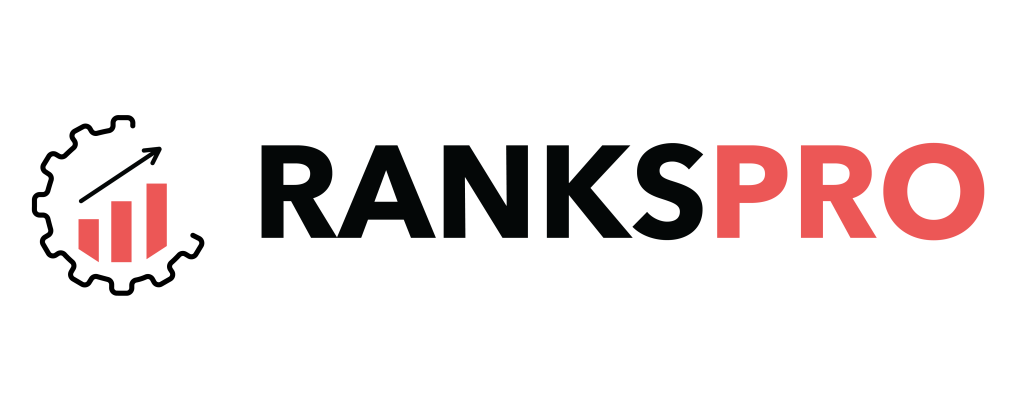What are backlinks?
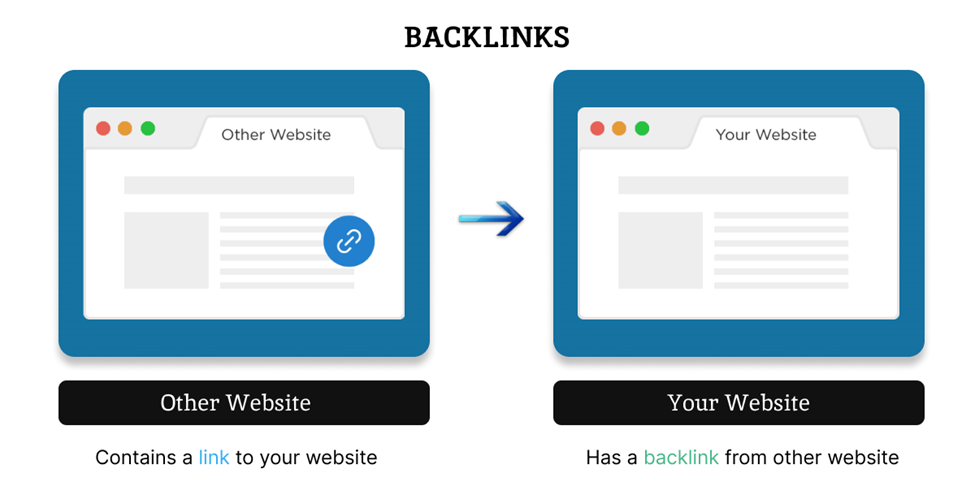
Backlinks, also regarded as inbound or external links, are the links that point to another website. As back linking takes place away from a website, it is regarded as off-page SEO rather than on-page SEO, which refers to the content on your site.

Search engines like Google view backlinks as votes of recommendation for a site. When you link to a site, you are vouching for it; that’s why pages with lots of backlinks often rank higher on Google. Especially if the backlinks are from trusted, authoritative sources.
In simple words, a backlink signifies how trustworthy and popular your website is in the eyes of users and search engines. The quality and quantity of backlinks on your site greatly influence the ranking of your website.
Understanding backlinks and related terms
Before we go further into explaining the role of backlinks in an SEO strategy and how they can change your SEO game, it is important to be aware of some terms related to backlinks and link building.
Here we have explained a few terms related to link building in brief to make it easier for you to move further.
Backlinks: A backlink, also regarded as an inbound link, is a link from another website to your site. They are important for SEO as they help search engines consider your website valuable and relevant.

Hyperlinks: A hyperlink is a link that connects two web pages. When a user clicks on a hyperlink, it takes the user to the page to which the hyperlink is pointing. They can be internal links (links within the same website) or external links (links to other websites).

Referring domains: A referring domain is a website from which the target website or web page has one or more backlinks. For instance, if a web page has a backlink from the New York Times, then it has one referring domain. If it has a link from the New York Times or Forbes, it has two referring domains. The more referring domains you have, the more authoritative your website is considered to be by search engines.
External links: An external link is a link from one website to another website. Suck links can be inbound links or backlinks (links from other websites to your website) or outbound links (links from your website to other websites).
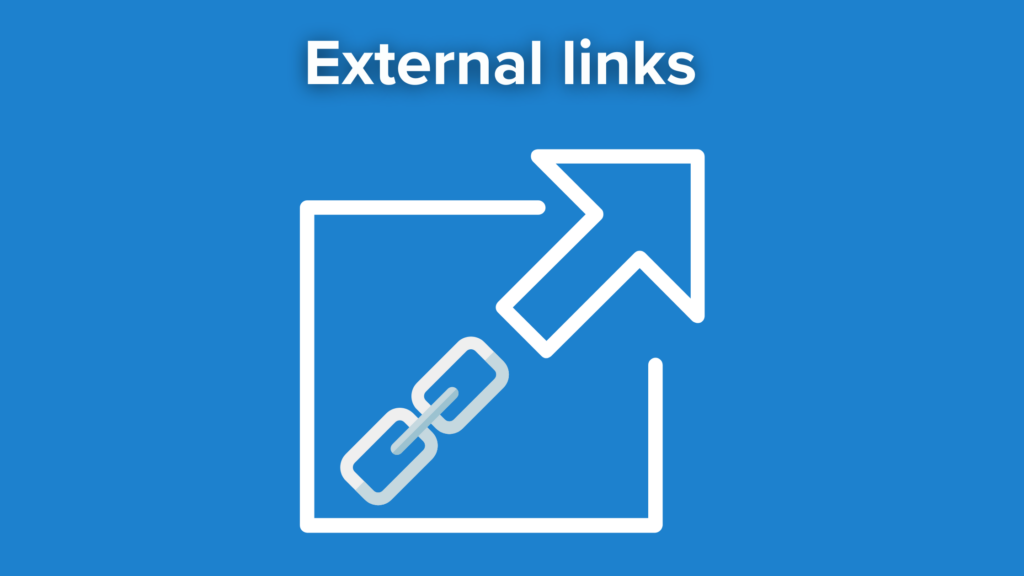
Internal Links: Internal links are any links from one page of a website to another page on the same website. These links are critical for navigation and search engine crawlability.

Broken link: A broken link is a link that points to a non-existent resource. These links can’t be accessed by a user.
Editorial link: When you receive a link without paying for it or requesting it in some way, that’s an editorial link. These links are part of a strong link profile.
Dofollow links: Dofollow links are backlinks that indicate to search engine crawlers to follow the hyperlink. These links are naturally followed unless they have a rel=”nofollow” attribute in the code. Do-follow links are important parts of an SEO strategy.
Nofollow Links: When you add a rel=nofollow tag to a link so as to indicate to a search engine not to count it towards the site it points to, it is regarded as a nofollow link.

Footer Links: The links placed in the site’s footer are called footer links. These links are heavily spammed; however, they are not seen often these days.
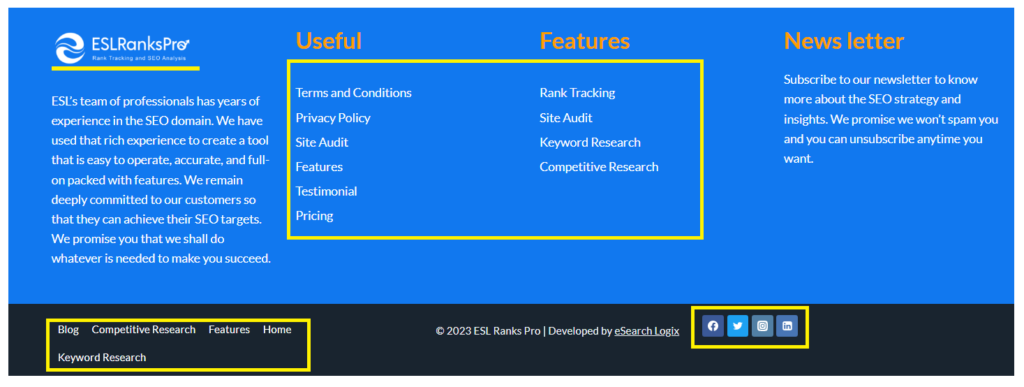
Hidden Links: These links are coded so that they don’t appear as links.
Link Exchange: Link exchange is also regarded as reciprocal linking, where two websites agree to link to each other’s content.

Link Reclamation: Link reclamation is the process of finding, fixing, and replacing online content where your brand or company has been improperly linked.
Link Schemes: Any attempt to manipulate search engines and websites trying to rank through the use of unnatural ranks is regarded as link spam.
Disavow: Disavowing a link is a way to tell Google to remove links from other sites to your site. If you have taken manual action against your site for unnatural links or if you think any link may amount to such action, you can send disavow lists straight to Google.
Now that you have an idea of the basic terms related to link building, let’s move ahead with understanding the evolution of backlinks in the Google algorithm updates over the years.
Are backlinks the backbone of SEO? The evolution of backlinks in Google algorithm updates

In the early days of Google, backlinks were considered the primary factor determining the ranking of a website on SERPs. The website that could fetch links from popular websites would rank higher in the search results. However, it led to abuse as people started creating backlinks from low-quality websites in an attempt to win the SEO game.
To address the manipulation of backlinks, Google began emphasizing the quality of backlinks rather than just the quantity and introduced the Google Penguin update in April 2012.
The Google Penguin update is an algorithm update designed to penalize websites involved in manipulative link building practices such as buying links, using hidden text or links, or participating in link schemes.
Google introduced the Penguin update in 2016, which was designed to penalize websites that had built backlinks in an unnatural way. The latest Penguin update was on September 23, 2016, when Google announced that Penguin was now part of the core algorithm. It means the update applies to all search queries and can now impact individual pages or sections of a site in addition to entire domains. This also means that it is impossible to avoid the penalty by disavowing links.
If your website has been penalized by the Penguin update, here are some steps that may help you recover:
- Remove any links that you believe are manipulative.
- Improve the quality of the content and user experience of your website.
- Build natural backlinks from high-quality websites.
However, the Penguin update is a complex algorithm, and it is not always possible to determine why a website has been penalized. If you are unsure what steps should be taken, it is recommended that you consult with an SEO expert.
In 2018, Google introduced the RankBrain update, which is a machine learning algorithm that helps Google understand the meaning of search queries. It also takes into account the quality of backlinks when ranking websites.
In 2020, Google introduced the Page Experience update, which is designed to reward websites for providing a good user experience. The user experience is evaluated on the basis of many factors, such as loading speed, mobile friendliness, and security.
Google has also begun to consider the context of backlinks as a factor in determining the ranking of a website. For instance, a backlink from a website that is relevant to your niche or website is more valuable than a backlink from a website that is not relevant.
Apart from that, Google also considers the anchor text of backlinks. Anchor text is the text used to link one website to another. For example, if the anchor text is “best eLearning company,” it conveys to Google that the website being linked to is a good resource for information on eLearning.
As Google’s algorithms continue to evolve, it is likely that the role of backlinks will continue to change. However, backlinks are still one of the most important factors that Google uses to rank websites, and they are likely to remain so for the foreseeable future.
Despite several changes in algorithms, backlinks still play a crucial role in determining the ranking of a site. The only change was that the focus shifted to the number of quality backlinks.
An industry study conducted by Backlink found that links remain Google’s key ranking signal.
Google has also confirmed that backlinks remain one of their three most important search engine ranking factors.

In this way, the higher number of backlinks has been a significant factor in scoring higher ranks in the past, and it is still an important ranking factor. The only difference is that both the quality and quantity of backlinks should be impressive enough to reach the top rankings.
Why do quality backlinks matter to your SEO efforts?
Back in time, Google’s ranking algorithm used to be about numbers. The higher the number of backlinks, the higher the rankings of your site will be. Consequently, SEO professionals used to do everything they could to gain as many links as possible for their websites.
However, as the industry evolved and Google’s algorithm got smarter, the role of backlinks in SEO also evolved. The quality of the links matters more to ranking higher on Google than the quantity.
Rather than the number of backlinks, high-quality backlinks now make your site trustworthy and rank well in the eyes of search engines. If several quality websites link to your site, it shows that your website is worthy of users’ attention, and search engines are more likely to display your content at the top of the SERP.
Reach the ultimate goal of ranking higher on Google.

Your ultimate aim is to make your domain reach the top of Google, and backlinks are considered one of the most important signals for ranking content on SERPs.
As Google views external links as a vote of popularity for a website, the higher the number of quality backlinks, the higher the probability of ranking on the top pages. However, if you have tons of backlinks from spammy, low-quality websites, it will lead you nowhere, as Google prioritizes only quality backlinks as a ranking factor.
Backlinks have actually formed the foundation of Google’s original algorithm (known as Page Rank). The Page Rank Algorithm was introduced by Google in 1998 andrecognizes links like votes that pass authority from page to page, making the most cited ones the most high-ranking.
As the algorithm changes, SEO specialists also change their approach to link acquisition. However, the core remains the same. Getting a higher number of high-quality backlinks will increase your rankings.
Discover new customers, audiences, and revenue opportunities with referral traffic

Backlinks are a great way to bring referral traffic to your site. They will be potentially relevant visitors to your website from reliable sources that are also likely to share your target demographic. This makes it simpler for you to turn these users into leads, who can subsequently be turned into brand-new clients.
Referral traffic refers to the web visitors referred to your site who have originally visited another site. It means that when someone clicks a link on another site, it takes them to your site. Here is how referral traffic is valuable for increasing the ranking and revenues of your website:
- Increased brand recognition
- Introduction to new audiences
- Opportunities for new qualified leads
- Improved authority from backlinks
Build trust and authority on a website.

Backlinks are used by Google to measure a website’s authority. Each quality backlink to a site signifies to search engines that the content is valuable, credible, and useful.
Apart from the quality of the backlink, the website authority is also dependent on the position of the link, or where the link was placed on the page. For evaluating the quality of the backlink, search engines usually consider the following factors:
Anchor text: The anchor text is the text used to link to your site. It should be relevant to the content of the page where the link is placed.

The nesting level of the donor website page is: It refers to the number of clicks required to get to the page where the link is placed. Links on the homepage are typically more valuable than links on lower-level pages.
Link attributes: These are the HTML tags that are used to define the link. The most important link attribute is the rel attribute. The rel attribute can be set to dofollow or nofollow. A dofollow link passes authority to the linked page, while a nofollow link does not.
The number of links on a page Backlink quality can also be impacted by the quantity of links on a page. Links on pages with many other links have a lower value than links on pages with few other links.
Link color: The color of the link can have an impact on how many people click on it. Visually appealing links are more likely to be clicked on.
The likelihood of the link being clicked: A link’s quality is also influenced by how likely it is to be clicked. Links that are clicked on more frequently are more valuable.
Your website’s other backlinks: The potential of your existing website backlinks might likewise influence the caliber of a new backlink. If you already have several high-quality links, the new link will be more valuable.
Each of these variables has the potential to impact a backlink’s quality, which in turn might impact the website’s authority.
In addition to the above-mentioned factors, the type of backlink also affects the quality of the link.
- Dofollow links are more valuable for improving search engine crawlability than nofollow links.
- Sponsored links and user-generated content links are less valuable than other kinds of links.
By considering all the factors affecting the quality of your backlinks, you may develop a backlink strategy that will help you increase the authority of your website.
Boost brand awareness
Quality backlinks help you build online reputations. They are like votes of recommendationgiven by one website to another. They not only affect the ranking but also how your website is perceived by website visitors.
When there is an increase in quality backlinks, it means that more people are talking about your brand. It indicates to search engines that your website is a reputable source. You can use a range of SEO tools, such as ESL Ranks Pro, Semrush, or Ahrefs, to measure the number of backlinks to your website.

Identifying and avoiding bad backlinks
Every SEO knows that content and backlinks are the backbone of their SEO strategy. If your site has bad backlinks, it will be algorithmically downgraded by Google, or you may get penalized. While Google bots are smart enough to ignore a few bad links, too many of them can harm your site’s ranking.
Links from Link-Mill websites
Links from link mill websites are also known as paid link schemes, which exist only to link to other sites. These sites are used to make money from link sales. They bring a large number of backlinks and have been popular among site owners for many years.
A large number of links is not always fruitful for your SEO strategy, especially when they come from dubious sources like link mills. These are referred to by Google as link schemes, and can include links earned in exchange for money or other resources.
You may come across many opportunities promising tons of backlinks for cash; however, keep in mind that a large number of bad backlinks are not worth it. Such links must be avoided at all costs. If your website has a few such links, it may not be an emergency for you to remove them, but if there are a lot of such links or you think that these are impacting your rankings, you should disown them.
Press release links
Press release links are those links placed in press releases, and they were popular around 10 years ago. If your strategy is to submit press releases to free distribution sites for the sole purpose of generating backlinks from a website, search engines will either ignore or penalize your site in such a case.
You must avoid any press release links that rely on over-optimized anchor text targeting your primary keyword. Keep in mind that Google has announced that it doesn’t like press releases dripping with backlinks that don’t add value. However, it is only about press releases brimming with backlinks and not quality news releases providing value to the readers.
Links from irrelevant sites
If you run an e-commerce pet store, the link to another pet food store might be useful and relevant to your audience. However, a link to your pet shop from an Italian cheese maker won’t be relevant at all. Not every backlink will be highly connected to your site. If a search engine finds backlinks completely unrelated to your niche, they will be considered bad backlinks.
Discussion forum and blog comment links
Discussion forums are a good place to gather information about any topic you want. If the links are coming from a reputed user or quality website and are not manipulative or spammy, there is no harm in keeping them. However, if you are getting thousands of links coming in from foreign discussion forums or low-quality spam links, they won’t do you any favors and can even get your site penalized.
The organic link is the best link because you don’t have to pay for it or trade it in. Sites that provide useful content are generally good sources of quality backlinks. On the contrary, bad backlinks are artificial, forced, or irrelevant. The pro tip here is to avoid anything that feels disreputable or too good to be true.
Links from foreign guestbook
These are useless links that can be placed manually or by using an automatic program. When visiting other websites, you may find some of them in the section Guestbook,” where you can sign up and even post HTML code in the comments to create a link back to your site.
When you get a lot of these links, your rankings will be automatically dropped by Google. It is always recommended to disavow such links, as they don’t have much credibility and you will lose your site’s credibility.
Many random no-follow links
Google crawlers are smart enough to detect spammy link building, and you can’t fool them. These crawlers usually follow nofollow links, but they won’t pass any link juice (ranking power) to the linked page.
It means if you have a lot of nofollow links, it will not help your website’s ranking in search results. Many times, random nofollow links can be seen as a way to manipulate search engine results. Google has a policy against link schemes, and if it finds that your website is using nofollow links in a spammy way, it could penalize your website in the search result pages.
No-Follows (and Follows) Social Bookmark Links
Social bookmarking links are considered bad links as they are often used for spam and manipulative link building. Apart from that, these links are usually no-follow links, which means that they do not pass any link juice to the linked page. Consequently, these links won’t help your site rank higher in search results. However, not all social bookmarking links are bad. If you use them appropriately, they can be used to promote your content and get backlinks to your website. For this, it is recommended
- Only submit high-quality content to social bookmarking sites.
- Avoid submitting links to irrelevant or low-quality websites.
Directory submissions (or a Directory Submissions Service)
In the past, directory submissions were the most popular way to build backlinks to a site. However, as search became more sophisticated, they started detecting spam. Many directories allow anyone to submit a link, regardless of its relevance or the quality of the site. This can lead to a lot of low-quality links being submitted to directories, which can hurt the reputation of the website.
Also, they do not pass much link juice to your website. It means they will not have much impact on your website’s ranking in search results. Also, when you submit a link to your own site, it can be seen as a form of self-promotion and is considered a negative thing by search engines, which can hurt your website’s ranking.
Private blog networks
Private blog networks are groups of websites owned and controlled by the same person or group of people. These websites are often created with the intention of building backlinks to other websites.
PBNS are considered a bad link-building technique because they are often used to manipulate search engines. Google has a policy against link schemes, and if it finds that your website is using a PBN, it could penalize your site in search engines.
Single-post blogs
Google prefers to see websites that frequently add fresh information because this shows that the website is relevant and active. On the other hand, single-post blogs are usually stopped once the first post is published. Google may view the website as having less value as a result and rank it lower in the search results.
Additionally, Google often regards single-post blogs as spammy. This is due to the fact that they are frequently made with no consideration for the content’s quality and only with the intention of obtaining backlinks. Google has a system in place to identify spammy link-using websites and penalize them. Google may penalize you if your website has numerous single-post blogs with backlinks.
Tips to create a strong backlink profile
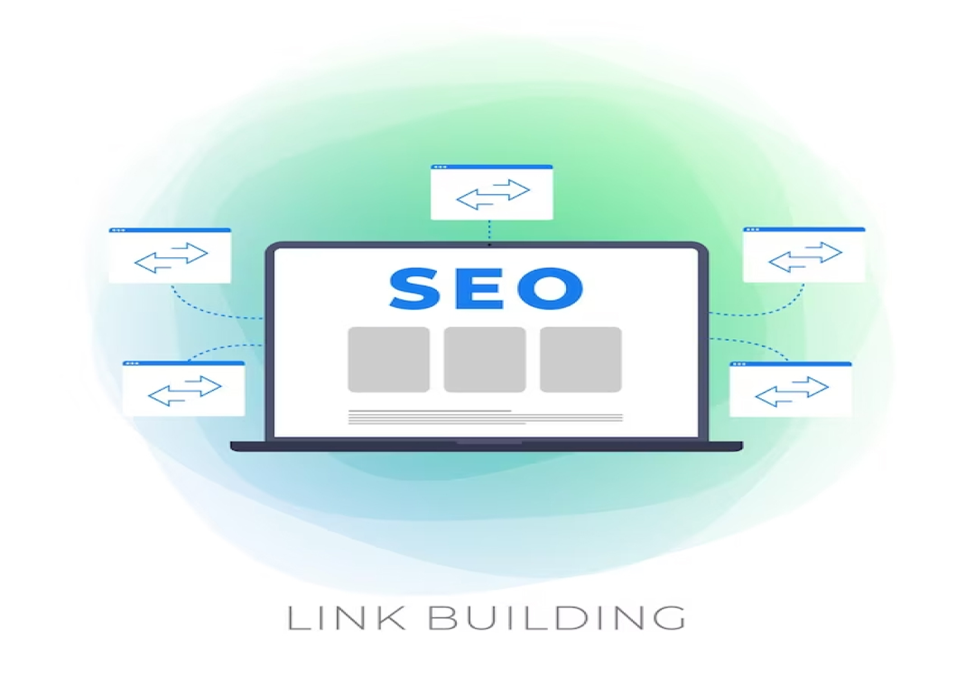
Backlinks have been an integral part of search engine optimization since its very beginning. Over the years, there have been several updates by Google that impact the role of backlinks, but they have always been the single most important off-page SEO ranking factor.
The role of links in influencing rankings has also evolved over time. Formerly, it was enough to simply have a ton of links on a page to make it rank at the top of the SERPs. However, now the quantity of quality links has emerged as an important factor influencing rankings on SERPs.
Now that you are aware of the signs of bad backlinks, it is important to know what factors contribute to making a good backlink that contributes to improving the ranking and reputation of your business.
Making sure that you create a strong backlink profile is vital and can make all the difference in your SEO game. Low-value links can harm your reputation and rankings. Let’s understand what you must have in a good backlink to create a strong backlink profile.
Backlink relevance
The link should be from a website that is relevant to the content of your website. It signifies that you are making your web page relevant for your targeted audience with your link-building strategy.
You can build backlinks for two kinds of relevance: 1. Location relevance 2. Topical (niche) relevance
For example, if your website is about health and wellness, a link from a website about fitness would be more relevant than a link from a website about cars. In other words, you need to keep obtaining new backlinks from referring domains that are related to the specific topic and content of the page. Local relevance or location-specific terms can also be considered for creating relevant backlinks.
There are tools like Ahrefs that can help you check the relevance of a number of links in a website’s backlink profile.
The more links in your backlink profile that are relevant to your website, the more natural your link profile will be. Your backlinks will be more relevant if they are at the following places:
- Domain of the linking page
- Inner-page URL of the linking page
- Title of the linking page’s title
- Meta description of the linking page
- h-tags of the linking page’s
- Blog content of the linking page
- The anchor text of the link
- The context around the link
Pro tip: One should look for closely connected referring domains and referring pages to create a strong backlink profile.
High authority referring to Domain
Another important consideration is to focus on getting backlinks from more authoritative referring domains.
A referring domain is an external site from which a backlink points to your site. A good backlink should point to a referring domain with a high authority score, which signals to the search engine that your content is reliable. Authority scores range from one to 100, with higher scores corresponding to a greater likelihood of ranking.
Anchor Text Relevance
There should be anchor text on every backlink. It helps indicate to search engines the keywords your website should rank for.
It usually consists of visible characters and words that hyperlink to another web page. These words must provide context about the web page they are linking to. Anchor text is usually bold, underlined, or has a different colored font to show users that it is a hyperlink. A good backlink should have strong anchor text, including target keywords, and be varied and natural-sounding.
Backlink Positioning
The location of a backlink can impact its value. Link position on the referring page helps to ensure that backlinks deliver the best impact on your site. The higher the position of the backlink, the better its impact on your rankings, and the more organic traffic will be directed to your site.
A backlink placed high on the referring page increases the authority of your website. For instance, if a backlink is in the first paragraph of a blog post, it will be considered better than having the links in the final paragraph. Apart from that, one should keep a minimum quantity of links on a page. The more links placed on a page, the less link value each link has.
Backlink Destinations
Your backlink should be directed to the right web page to be crawled by the search engines. It is an important step to ensure the quality of your link is strong. Backlink destination URLs must be relevant to the target keyword and referring domain.
Natural Backlink Profile
A natural backlink profile is the best profile to rank higher on search engines. It refers to the process of gaining links naturally by creating quality and valuable content without asking for them or, worse, paying for them. When a website buys backlinks, it can have a negative impact on its authority, especially if they are bought from spammy or toxic websites.
In order to create a strong backlink profile, the backlinks must be created organically and from high-quality, reliable external sources.
High-quality external websites
It is important to thoroughly check the link prospects before you go ahead with it. When you acquire links from expert websites, they must be authoritative and reputable. When you obtain backlinks from a referring domain with a positive domain authority score, it is crucial to ensure that the external website is not spammy or has any toxic background that could negatively affect your keyword rankings and website authority.
How to evaluate the quality of the backlinks
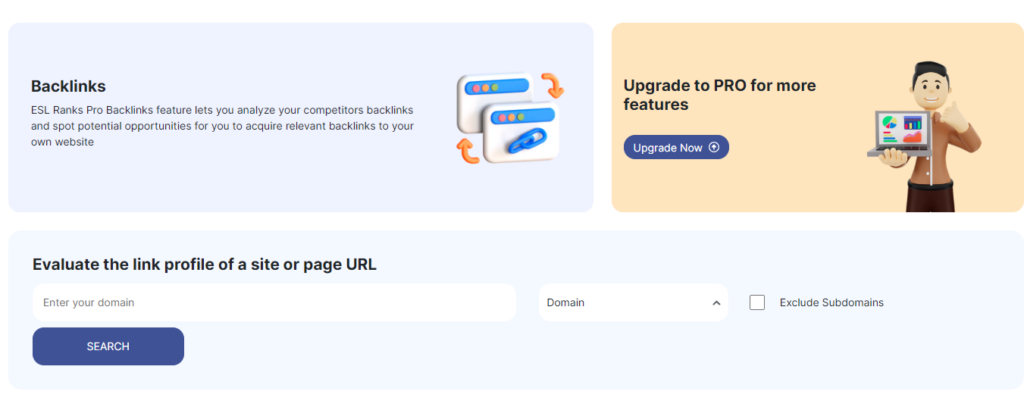
There is no single metric that can accurately determine if the backlink is of high or poor quality. However, an expert can interpret link-related metrics, which helps to better understand their quality. With practice, you will be naturally able to figure out the quality of a link; however, there are also tools that can find backlinks and check all the essential metrics associated with each one.
Google Search Console provides valuable insights into how your website is crawled and indexed by Google. It helps to identify and fix issues that might be affecting the ranking of your site.
Now that you have a basic understanding of backlinks and GSC, let’s find out how to check backlinks in Google Search Console.
Set up the Google Search Console
First of all, you need to set up your website in GSC. If you haven’t yet done it, go to the Google Search Console website and follow the instructions to verify ownership of your website. Once your website is verified in GSC, you will get access to all of its features, including the backlink checker.
Navigate to the backlink report
Once your website is set up in Google Search Console, the next step is to go to the “Links” section and select “External links.”. It will show you all external sites linked to your site in a backlink report.
Analyze your backlinks
By using the backlink report, you can analyze your backlinks in Google Search Console. There are many metrics provided in GSC that can help you evaluate the quality of your backlinks, including:
- Total number of backlinks
- Number of linking domains
- Top linking domains
- Top linking pages
- Anchor text distribution
- Linking countries
To evaluate the quality of backlinks, consider all the signs of good backlinks mentioned above. Here are some quick tips for assessing the quality of the backlinks
- Identify as many backlink domains as you can using multiple backlink data sources.
- Examine the domain authority.
- Improve the anchor texts you use. Make sure the anchor text is relevant and describes what the reader will see after following the link.
- Check that all of the pages where you have backlinks appear natural and follow social sharing traces.
- Check the percentage of dofollow links in your total number of backlinks. Keep in mind that a natural link profile usually consists of more nofollow links than dofollow links; having a larger percentage of nofollow links is desirable.
- Make sure that the linking page content is relevant and of high quality. A link from a low-quality page with irrelevant content will not do much to improve your SEO rankings.
- The linking domain should be a high-quality domain with a good reputation. It should also be relevant to your website’s niche.
- A link from a website with a shared IP address is less valuable than a link from a website with a unique IP address. This is because shared IP addresses can be used by multiple websites, some of which may be low-quality or spammy.
- A link that is located in the body of the content is more valuable than a link that is located in the footer or sidebar. Here are some additional tips for identifying low-quality backlinks:
- Watch out for websites that have been penalized by Google.
- Watch out for links from websites that are not relevant to your niche.
- Watch out for links from websites with a high spam score.
- Watch out for links that are no-follow links.
- Watch out for links that seem forced or unnatural.
You can use tools like ESL Ranks Pro that help you perform a site audit so you get an overview of its performance, including its on-page SEO score, organic monthly traffic, organic keywords, backlinks, etc. Besides, some of the most popular SEO tools for evaluating backlinks are Ahrefs, SEMrush, Moz etc.
Effective Link building strategies for boosting organic traffic
A good backlink profile will help you swiftly climb the ladder of success in your SEO efforts. One of the best ways to build links is to earn them. Great content is the pillar of the link-building strategy. The best link-building strategies require you to conduct in-depth research, create great-quality content, and carefully implement the strategies to reap the benefits. Some of the common link-building strategies are as follows:
Link-worthy content
As mentioned, content is the foundation of all link building. Start by creating link-worthy content and sharing it with the sites you think can benefit from it.
- When you gain a backlink from a high-authority site, it establishes your credibility in the eyes of search engines. On the other hand, when you get backlinks from different sites, it helps expand your target audience, bringing new potential customers to your website.
- Create high-quality content relevant to your target audience.
- Write blog posts and guest posts for other websites in your niche industry.
- Participate in forums and online communities relevant to your industry, linking to your website when appropriate.
- Commenting on other websites’ blog posts and linking to your website when relevant
- Distributing press releases about your company or website

Outreach
Outreach is the process of establishing relationships with other websites to get high-quality backlinks, which in turn help promote your own website or brand. It usually involves the SEO experts sending articles to a site editor, explaining how they would benefit from the content. Here are some recommendations for outreach.
- Personalize all your outreach. Avoid sending generic messages, as site editors or the concerned person may completely ignore them.
- Make sure to keep it catchy, short, and to the point. Remember, people don’t have time to go through lengthy emails.
- Tell them why linking to your site or article is beneficial for them. You should offer them something of value so they can consider your request. For instance, you might offer a guest blog post in exchange for a backlink.
- Provide the anchor text for them to make it easy for them. Anchor text can be included in the subject line, in the body of the mail, or in the signature.
- To effectively build links for clients, identify relevant websites with similar business models and use Google search to find bloggers, influencers, and website owners in your niche.
- Check domain authority using tools like MozBar and engage with them through initial interactions.
- Use email outreach tools to find contact details and send personalized emails.
The skyscraper technique
The skyscraper technique refers to finding relevant content, producing something better than existing content, and reaching out to the site owners who have already linked to similar content.
- Find the best content in your niche. You can use tools like a backlink checker to find which websites are linking to the most relevant content.
- Analyze the length, depth, and quality of the content
- Create an outline for the skyscraper’s content. This should be based on the best content that you found.
- Write the skyscraper content. It should be high-quality and informative content, preferably adding more value in terms of information, graphics, and visuals to the existing content.
- Once the content has been created, it should be promoted to relevant audiences.
- Check out the websites that have linked to the original content and ask them to link to your content instead of the existing content.

Guest Posts
Guest posting is the process of writing articles or blogs for other websites in your niche. When you post a guest blog, you can include a link to your own site in your author bio. In order to find guest posting opportunities, here are some recommendations:
- Search for relevant sites that accept guest posts.
- Find guest posting opportunities and write high-quality articles and blogs.
- Use search terms or competitor sites to find opportunities.
- Follow editorial guidelines before pitching, as brands ignore pitches that don’t meet their criteria.

Broken link building
Broken link building is the process of finding broken links on other websites and recommending your own content as a replacement.
- If you have only a small number of backlinks, you can manually check the sites for broken links. This can be done by visiting each website that links to your site and checking the link to see if it is broken.
- If there are a large number of broken links, you can use some tools like Ahrefs or Semrush to find them.
- Once you find some broken links, you can reach out to the website owner and recommend your own content as a replacement. Choose links with high referring domains and steady traffic.
- Fix 404 errors by providing a brand new link to a similar page
- Make sure any redirects are linking to the final destination. If there are redirect chains, remove them.
- If you have recently migrated to HTTPS, make sure all links are updated from HTTP.

Citation building
Citation building is the process of acquiring backlinks to your website by getting mentioned or cited on other websites or online directories. Here are some ways to get cited in
- Write guest blog posts related to your niche industry. When you write a guest blog post for another website, you can include a link back to your own website in your author bio.
- Publish white papers relevant to your niche so other websites may cite them in their own content.
- There are numerous directories that list websites belonging to a specific niche. When you submit your website to a directory, you can include a link to your own website.’
- If you have written newsworthy content, you can reach out to journalists and bloggers and ask them to cite it in their own content.

Directory submission
Directory submission is a way to submit your websites to directories relevant to your niche. It can be a great way to get some initial backlinks, but it is not as effective as other methods. When you are submitting your website to a directory, make sure to choose only high-quality and relevant sites for your niche. Here are some tips for getting cited and submitting your website to directories:
- Submit high-quality and informative content.
- Reach out to other websites and ask them to cite your content.
- Look only for high-quality directories that are relevant to your niche.
- Don’t submit your website to too many directories, as it may be seen as spam by Google.
- Promote your content on social media platforms.

Wrap UP
Link building is a way to show search engines that your website is valuable and relevant, and the most effective way to do this is by having a strong backlink profile. A strong backlink profile consists of good-quality backlinks—a collection of links from high-quality websites that are relevant to your website’s niche.
These links should be natural and organic, not spammy or forced. The higher the number of good-quality backlinks, the greater your chances of appearing on the top SERP pages. A strong backlink profile can help you improve your website’s visibility, authority, and trustworthiness, which can all lead to higher rankings, a better reputation, and more revenue.
Build a strong backlink profile with high-quality links. Leverage this opportunity to your benefit with the help of our SEO and digital marketing specialists. We have cracked the code for link building to make it work for you. Schedule a chat with us, and we will help you get the SEO edge you need to soar higher.
